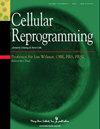Preconditioning with Trehalose Protects the Bone Marrow-Derived Mesenchymal Stem Cells Under Oxidative Stress and Enhances the Stem Cell-Based Therapy for Cerebral Ischemic Stroke.
IF 1.2
4区 医学
Q4 BIOTECHNOLOGY & APPLIED MICROBIOLOGY
引用次数: 3
Abstract
Bone marrow-derived mesenchymal stem cell (BMSC) transplantation has emerged as a potential treatment for ischemic stroke. Preconditioning with pharmacological agents before cell transplantation has been shown to increase the efficiency of cell therapy. In this study, trehalose (Tre), an autophagy inducer, was used as a pharmacological agent to treat BMSCs, and the neuroprotective effect of BMSCs preconditioned with Tre on cerebral ischemia was assessed. BMSCs were treated in vitro with different concentrations of Tre. Immunofluorescence staining of LC3B was performed to detect autophagy, and Western blotting for LC3, Beclin1, p-AMPK, and p-mTOR was performed. Flow cytometry and Western blotting analysis were performed to measure cell apoptosis in the presence of hydrogen peroxide (H2O2). Enzyme-linked immunosorbent assay was used to test the secretion levels of neurotrophic factors. An in vivo ischemia/reperfusion model was generated by middle cerebral artery occlusion in male Sprague Dawley rats, and Tre-preconditioned BMSCs were administered intralesionally 24 hours after ischemic injury. Histopathological examination and neurological function studies were conducted. In vitro, Tre promotes autophagy of BMSCs through the activation of the AMPK signal pathway. Tre protected BMSCs from H2O2-induced cell viability reduction and apoptosis. Moreover, Tre pretreatment increased the secretion of brain-derived neurotrophic factor, vascular endothelial growth factor, and hepatocyte growth factor. In vivo, preconditioning with Tre could further enhance the survival of BMSCs, reduce infarct size, alleviate cell apoptosis, abate vessel decrease, and ultimately improve functional recovery. Our study indicates that Tre can enhance the survival of BMSCs under oxidative stress and enhance BMSC-based treatment of ischemia/reperfusion injury.海藻糖预处理对氧化应激下骨髓间充质干细胞的保护作用及对缺血性脑卒中干细胞治疗的促进作用
骨髓间充质干细胞(BMSC)移植已成为缺血性中风的潜在治疗方法。在细胞移植前使用药物进行预处理已被证明可以提高细胞治疗的效率。本研究以自噬诱导剂海藻糖(tre3)作为治疗骨髓间充质干细胞的药物,评价tre3预处理骨髓间充质干细胞对脑缺血的神经保护作用。用不同浓度的tre3体外处理骨髓间充质干细胞。LC3B免疫荧光染色检测自噬,LC3、Beclin1、p-AMPK、p-mTOR进行Western blot检测。采用流式细胞术和Western blotting检测过氧化氢(H2O2)作用下细胞凋亡情况。采用酶联免疫吸附法检测神经营养因子的分泌水平。建立雄性sd大鼠大脑中动脉闭塞的体内缺血再灌注模型,缺血损伤24小时后给予经tre3预处理的骨髓间充质干细胞。进行组织病理学检查和神经功能研究。在体外,Tre通过激活AMPK信号通路促进骨髓间充质干细胞的自噬。3保护骨髓间充质干细胞免受h2o2诱导的细胞活力降低和凋亡。此外,tre3预处理可增加脑源性神经营养因子、血管内皮生长因子和肝细胞生长因子的分泌。在体内,用Tre预处理可进一步提高骨髓间充质干细胞的存活率,减少梗死面积,减轻细胞凋亡,减缓血管萎缩,最终促进功能恢复。我们的研究表明,tre3可以提高骨髓间充质干细胞在氧化应激下的存活率,促进骨髓间充质干细胞对缺血再灌注损伤的治疗。
本文章由计算机程序翻译,如有差异,请以英文原文为准。
求助全文
约1分钟内获得全文
求助全文
来源期刊

Cellular reprogramming
CELL & TISSUE ENGINEERING-BIOTECHNOLOGY & APPLIED MICROBIOLOGY
CiteScore
2.50
自引率
6.20%
发文量
37
审稿时长
3 months
期刊介绍:
Cellular Reprogramming is the premier journal dedicated to providing new insights on the etiology, development, and potential treatment of various diseases through reprogramming cellular mechanisms. The Journal delivers information on cutting-edge techniques and the latest high-quality research and discoveries that are transforming biomedical research.
Cellular Reprogramming coverage includes:
Somatic cell nuclear transfer and reprogramming in early embryos
Embryonic stem cells
Nuclear transfer stem cells (stem cells derived from nuclear transfer embryos)
Generation of induced pluripotent stem (iPS) cells and/or potential for cell-based therapies
Epigenetics
Adult stem cells and pluripotency.
 求助内容:
求助内容: 应助结果提醒方式:
应助结果提醒方式:


